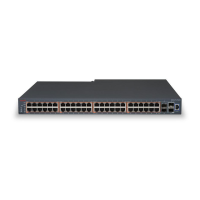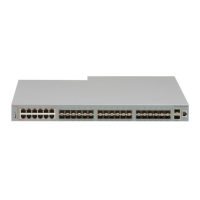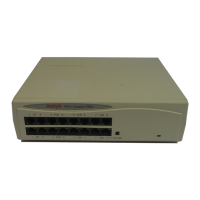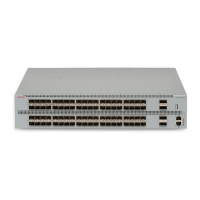In the following figure, the transmit (Tx) and receive (Rx) paths share the same fiber by using two
different wavelengths. One model transmits at 1310 nm and receives at 1490 nm, while the mating
model transmits at 1490 nm and receives at 1310 nm. You can only connect a mating pair.
The long wavelength optical transceivers used in these models provide variable distance ranges
using single mode fiber optic cabling.
You can use 1000BASE-BX SFP transceivers to double the number of your fiber links. For example,
if you install 20 fiber pairs with 20 conventional ports connected, you can use 1000BASE-BX SFP
transceivers to expand to 40 ports, using the same fiber.
The following table provides the reach and part numbers for each of the mating pairs.
Table 16: 1000BASE-BX SFP transceivers
Reach 1310 nm 1490 nm
10 km AA1419069-E6 AA1419070-E6
40 km AA1419076-E6 AA1419077-E6
1000BASE-BX10 bidirectional DDI SFP specifications
The 1000BASE-BX10 SFP transceivers (part numbers AA1419069-E6 and AA1419070-E6) can
attain a reach of up to 10 km.
The following table describes standards, connectors, cabling, and distances for the 1000BASE-
BX10 SFP transceiver.
Table 17: IEEE 802.3ah 1000BASE-BX10 bidirectional SFP specifications
Parameter Specification
Connectors Single-fiber LC
Data rate 1.0 Gbps
Line rate (8B/10B code) 1.25 Gbps
Distance Up to 10 km
Wavelength 1310 nm and 1490 nm
Link optical power budget 11.0 dB
Maximum transmitter and dispersion power penalty 3.3 dB
Transmitter characteristics
Table continues…
SFP specifications
April 2016 Installing Transceivers and Optical Components on Avaya ERS 4900 and 5900
Series 37
Comments on this document? infodev@avaya.com

